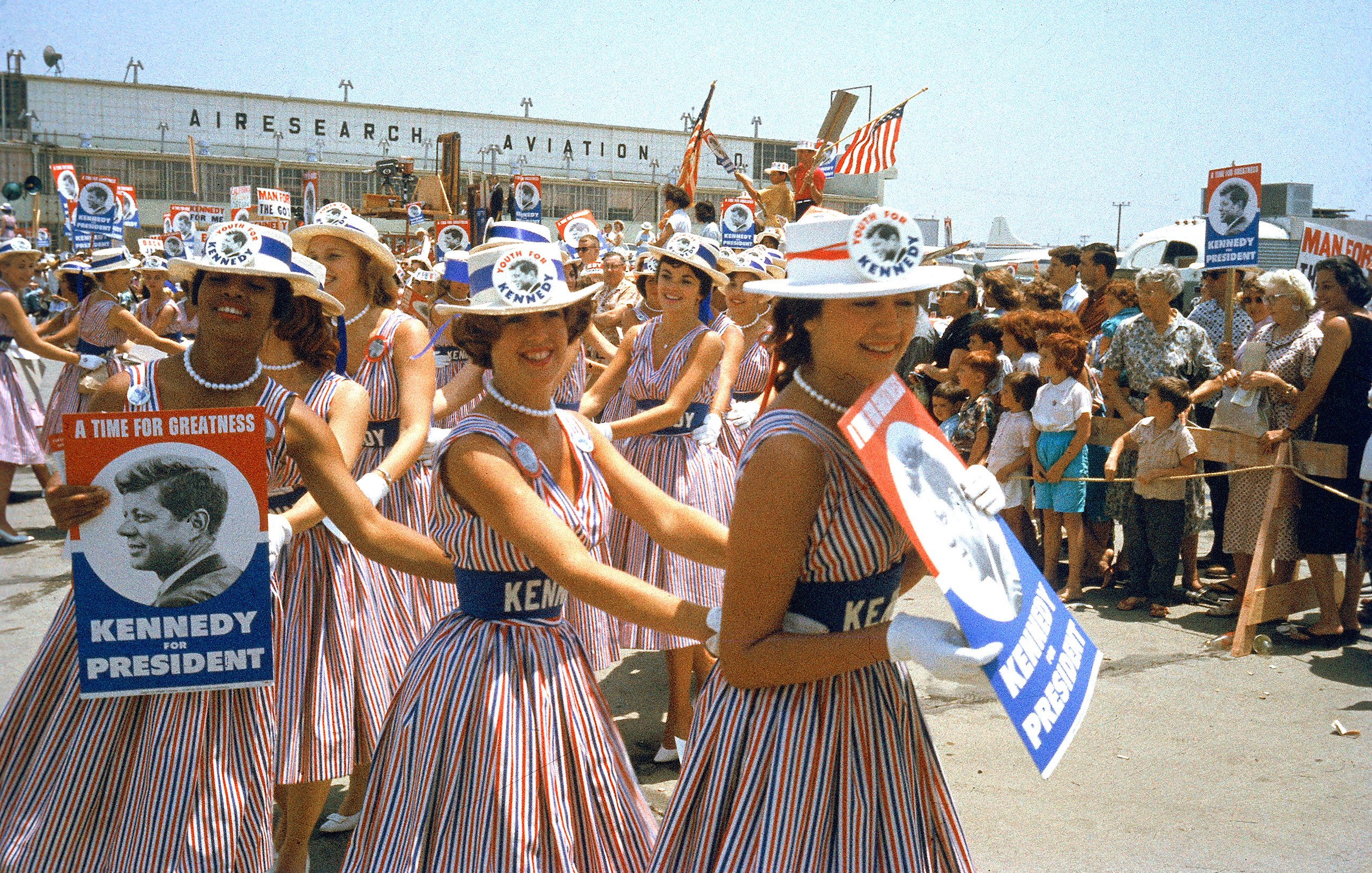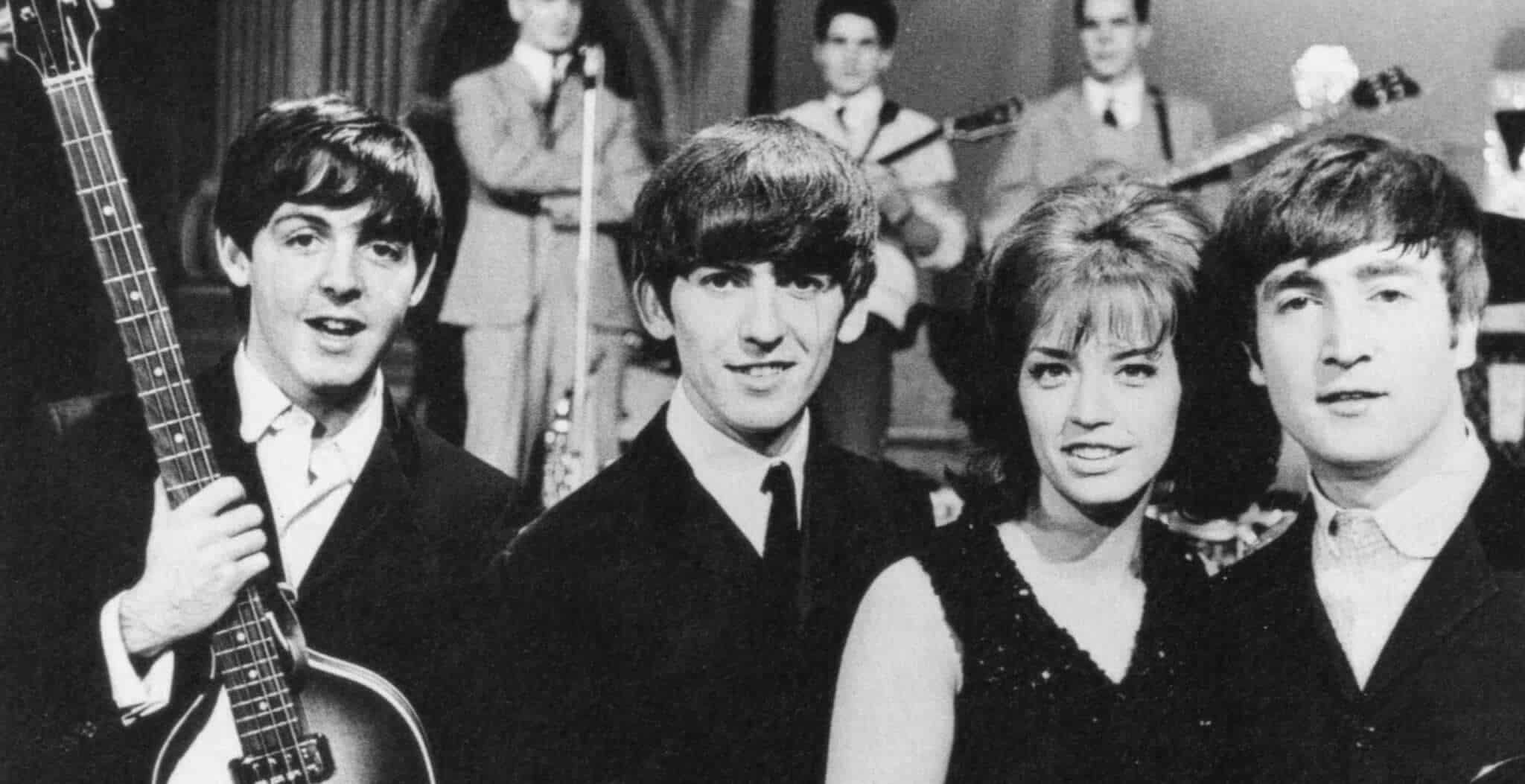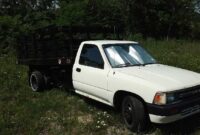1960s Chevy Pickup Trucks For Sale: A Comprehensive Buyer’s Guide pickup.truckstrend.com
The roar of an old V8, the unmistakable lines of classic American steel, and the nostalgic pull of a bygone era—these are just some of the reasons why 1960s Chevy pickup trucks remain immensely popular among enthusiasts, collectors, and those simply seeking a piece of automotive history. More than just utilitarian workhorses, these trucks have transcended their original purpose to become icons of style, versatility, and rugged charm. Whether you’re dreaming of a fully restored showstopper, a reliable daily driver, or a project truck to customize, the market for 1960s Chevy pickups is vibrant and diverse.
This comprehensive guide will delve into the world of these beloved vehicles, offering insights into their enduring appeal, what to look for when buying, where to find them, and practical advice for navigating the exciting journey of ownership. Prepare to explore why a 1960s Chevy truck might just be your next perfect ride.
1960s Chevy Pickup Trucks For Sale: A Comprehensive Buyer’s Guide
The Golden Age of Chevrolet Pickups: An Overview of the 1960s Models
The 1960s marked a transformative decade for Chevrolet trucks, beginning with a revolutionary redesign in 1960 and culminating in the highly sought-after "Action Line" series by the end of the decade. This era saw the introduction of the C/K series nomenclature (C for two-wheel drive, K for four-wheel drive), signifying a new era of sophistication and capability.
- 1960-1966 (The "Eyebrow" or "Glamour" Generation): These early 60s trucks, often dubbed the "eyebrow" due to the distinctive hood design over the headlights, introduced independent front suspension (torsion bar in ’60-’62, coil springs from ’63 onwards) for a more car-like ride. They featured a sleek, almost futuristic design for their time, moving away from the more boxy trucks of the 1950s. Popular models included the C10 (half-ton), C20 (three-quarter ton), and their K-series 4×4 counterparts. Body styles included the conventional Fleetside (smooth sides) and the Step-side (fenders outside the bed). Engine options typically included robust inline-sixes (235, 250, 292 cubic inches) and the ever-popular small-block V8s (283, 327 cubic inches).
- 1967-1972 (The "Action Line" or "Glamour" Generation continued): While this generation technically extended into the early 70s, the 1967-1969 models are firmly rooted in the 1960s and represent a significant design evolution. Featuring a simpler, cleaner body design without the prominent "eyebrows," these trucks are arguably the most popular and recognizable of the 1960s Chevy pickups. Their clean lines, comfortable interiors, and robust mechanicals made them instant classics. The 1967 model, often referred to as a "one-year-only" design due to unique small rear window, is particularly coveted. Engine options expanded to include the potent 396 big-block V8 in later years, alongside the common 250 I6 and 350 small-block V8. Transmission options included 3-speed and 4-speed manuals, and the popular Turbo-Hydramatic 350 (TH350) and 400 (TH400) automatics.
Beyond the C/K series, Chevrolet also offered larger C30 (one-ton) pickups, Panel Trucks (enclosed cargo area), and Suburbans, all sharing similar styling cues and mechanical components, expanding the range of available classic Chevy options.
Why Buy a 1960s Chevy Pickup Today?

The appeal of these vintage trucks extends far beyond mere nostalgia. They offer a unique blend of practicality, style, and investment potential:
- Timeless Aesthetics: The designs of 1960s Chevy trucks are simply iconic. Their clean lines, chrome accents, and often two-tone paint schemes exude a classic cool that modern vehicles struggle to replicate.
- Robust Simplicity: Engineered in an era before complex electronics, these trucks are mechanically straightforward. This translates to easier diagnosis, more affordable repairs, and the satisfaction of working on your own vehicle.
- Unmatched Customization Potential: From mild to wild, these trucks are a blank canvas for personalization. Hot-rodding, lowering, lifting, engine swaps (especially the popular LS swap), custom interiors, and unique paint jobs are all common modifications, allowing owners to create truly unique vehicles.
- Strong Community and Parts Availability: A massive aftermarket industry exists for 1960s Chevy trucks, meaning almost any part—from body panels and trim to engine components and interior pieces—is readily available. Furthermore, a passionate community of owners and enthusiasts provides a wealth of knowledge and support.
- Investment Potential: Well-maintained, original, or professionally restored 1960s Chevy pickups have shown consistent appreciation in value, making them not just a hobby but potentially a sound investment.

Navigating the Market: What to Look For When Buying
Buying a classic vehicle requires a different approach than purchasing a new car. Here’s a detailed guide on what to scrutinize:

- Rust, Rust, Rust: This is the primary enemy of vintage vehicles. Thoroughly inspect common rust prone areas:
- Cab Corners and Rocker Panels: These are notorious for rust due to water and debris accumulation.
- Floor Pans: Check under the carpet/mat, especially around the footwells.
- Bed Floors and Mounts: Look for rot in the bed and where it attaches to the frame.
- Fenders and Wheel Arches: Especially the rear fenders.
- Frame: While generally robust, inspect for significant rust, cracks, or previous repair attempts.
- Inner Fenders and Radiator Support: Often overlooked but critical areas.
- Body and Paint:
- Panel Alignment: Look for consistent gaps between panels. Misalignment can indicate accident damage or poor repair work.
- Bondo/Filler: Use a magnet to check for excessive body filler, which hides underlying rust or damage.
- Paint Quality: Look for overspray, orange peel, or bubbling, which can indicate a hurried or poor paint job.
- Mechanical Soundness:
- Engine: Listen for unusual noises (knocks, clatter), excessive smoke from the exhaust (blue for oil, white for coolant, black for rich fuel), and fluid leaks. Check oil and coolant levels.
- Transmission: Ensure smooth shifting, both manually and automatically. Check for slipping or harsh engagement.
- Brakes: Test for firm pedal feel and straight stopping. Check for leaks at the master cylinder or wheels.
- Suspension and Steering: Look for worn bushings, leaky shocks, or excessive play in the steering wheel.
- Electrical System: Test all lights, gauges, wipers, and the heater/fan. Look for frayed or patched wiring.
- Interior:
- Seat Condition: Rips, tears, and collapsed foam are common.
- Dash Pad: Cracks from sun exposure are typical.
- Gauges: Ensure they are functional.
- Weatherstripping: Check around doors and windows for cracks or hardening, which can lead to leaks.
- Documentation: A clear title is essential. Any maintenance records, original owner’s manuals, or build sheets add significant value and provide insight into the truck’s history.
- Originality vs. Modifications: Decide if you want a numbers-matching original, a tastefully modified driver, or a blank slate project. Each has its own value and appeal.
- Professional Pre-Purchase Inspection (PPI): For serious buyers, hiring a qualified mechanic specializing in classic vehicles for a PPI is highly recommended. It can uncover hidden issues and save you significant money in the long run.
Where to Find Your Dream Chevy Pickup
The market for 1960s Chevy trucks is robust, offering several avenues for finding your perfect match:
- Online Marketplaces:
- ClassicCars.com, Hemmings.com, AutoTrader Classics: Dedicated classic car sites with a wide range of listings, often from dealers and private sellers.
- eBay Motors: A large volume of listings, but requires careful vetting.
- Facebook Marketplace/Groups: Many dedicated classic truck groups where members buy, sell, and trade. Good for local finds.
- Specialized Dealerships: Classic car dealerships often have a curated selection of restored or well-maintained trucks, though prices may be higher due to overhead and reconditioning.
- Auctions: Major auction houses like Barrett-Jackson, Mecum Auctions, and local classic car auctions can offer a wide range of conditions and price points. Be aware of buyer’s premiums.
- Car Shows and Swap Meets: Excellent places to see trucks in person, talk to owners, and sometimes find vehicles for sale by word of mouth.
- Word of Mouth & Local Clubs: Joining local classic truck clubs can open doors to private sales and insider knowledge.
Understanding the Price Spectrum: What to Expect
The price of a 1960s Chevy pickup can vary dramatically based on several factors:
- Model Year and Trim: Later 60s C10s (especially ’67-’72) often command higher prices than earlier models due to popularity.
- Condition: This is the single biggest determinant. A rusty project truck will be significantly cheaper than a fully restored, show-quality example.
- Engine and Transmission: Original big-block V8s or desirable small-blocks (like a 327 or 350) can increase value. Manual transmissions, especially 4-speeds, are often sought after.
- Originality vs. Modifications: Numbers-matching original trucks can command a premium, but well-executed custom builds can also fetch high prices.
- Rarity: Less common body styles (e.g., panel trucks, certain Suburban configurations) or rare factory options can influence price.
- Geographic Location: Prices can vary by region.
Here’s an estimated price table for popular 1960s Chevy Pickup Trucks For Sale:
| Model/Year Range | Condition Category | Description | Estimated Price Range (USD) |
|---|---|---|---|
| 1960-1966 C10 | Project | Significant rust, non-running engine, missing parts, needs full restoration. | $3,000 – $8,000 |
| Driver | Runs and drives, some rust/patina, functional interior, needs cosmetic work and minor mechanical attention. | $8,000 – $20,000 | |
| Restored/Show | Professionally restored to original or custom specifications, excellent paint, new interior, rebuilt mechanicals, show-quality. | $25,000 – $50,000+ | |
| 1967-1969 C10 | Project | Significant rust, non-running engine, missing parts, needs full restoration. | $5,000 – $12,000 |
| Driver | Runs and drives well, minor rust, decent paint, clean interior, suitable for regular use. | $15,000 – $35,000 | |
| Restored/Show | Flawless paint and body, new/restored interior, fully rebuilt powertrain (often with upgrades like LS swap), concours or high-end custom. | $40,000 – $80,000+ | |
| 1960s C20/K10/K20 | Project | As-is condition, typically rougher than C10s due to harder use, significant work required. | $2,000 – $7,000 |
| Driver | Functional, may have more wear and tear, suitable for light hauling or a work truck feel. | $7,000 – $18,000 | |
| Restored/Show | Less common to be fully restored, but can be very valuable when done well, especially K-series 4x4s. | $20,000 – $60,000+ |
Note: These are general estimates and prices can fluctuate based on specific model year, engine, transmission, options, and market demand.
Owning and Maintaining Your Classic Chevy
The journey doesn’t end with the purchase. Owning a classic truck is a rewarding experience that comes with its own set of responsibilities:
- Routine Maintenance: Stick to a regular schedule for oil changes, fluid checks (coolant, brake fluid, transmission fluid), and greasing chassis points.
- Common Issues: Be prepared for potential electrical gremlins (often due to old wiring), carburetor tuning, and ongoing rust prevention.
- Upgrades: Many owners opt for modern upgrades to enhance drivability and safety, such as power steering and brakes, front disc brake conversions, modern air conditioning, or even a complete engine swap to a more fuel-efficient and powerful LS engine.
- Insurance: Consider specialized classic car insurance, which often offers better coverage and lower premiums than standard policies, recognizing the vehicle’s appreciating value.
- Storage: Protect your investment by storing it in a dry, secure location, preferably indoors, to prevent rust and weather damage.
Frequently Asked Questions (FAQ)
Q: Are 1960s Chevy trucks reliable for daily driving?
A: With proper maintenance and potentially some modern upgrades (like electronic ignition, disc brakes, and updated wiring), many 1960s Chevy trucks can be quite reliable for daily driving. However, expect a different driving experience compared to modern vehicles.
Q: What’s the difference between a "C" and a "K" series truck?
A: "C" denotes a two-wheel-drive (2WD) truck, while "K" indicates a four-wheel-drive (4WD) truck. The number that follows (e.g., C10, K20) refers to the truck’s weight capacity (10 for half-ton, 20 for three-quarter ton, 30 for one-ton).
Q: What are the most common rust areas on these trucks?
A: The most common areas are cab corners, rocker panels, floor pans, inner and outer fenders, bed floors, and the bottoms of doors. Always check the frame as well.
Q: Are parts readily available for 1960s Chevy pickups?
A: Absolutely! Due to their immense popularity, there’s a huge aftermarket industry providing reproduction parts for almost every component, from sheet metal to interior pieces and mechanical parts.
Q: What is an "LS swap"?
A: An "LS swap" refers to replacing the original engine with a modern General Motors LS-series V8 engine (e.g., LS1, LS2, 5.3L Vortec). These engines offer significantly more power, better fuel economy, and modern reliability, making them a popular modification.
Conclusion
The allure of 1960s Chevy pickup trucks is undeniable, blending classic American design with a utilitarian spirit. Whether you’re drawn to the elegant lines of an early 60s "eyebrow" model or the rugged simplicity of a late 60s "Action Line" truck, there’s a Chevy pickup out there waiting for you.
Embarking on the journey of purchasing one of these classics requires careful research, thorough inspection, and a clear understanding of your goals. But with the right approach, you’ll not only acquire a vehicle but also a piece of automotive history, a customizable canvas, and an entry into a passionate community of fellow enthusiasts. The open road, a classic soundtrack, and the timeless style of a 1960s Chevy pickup await.



